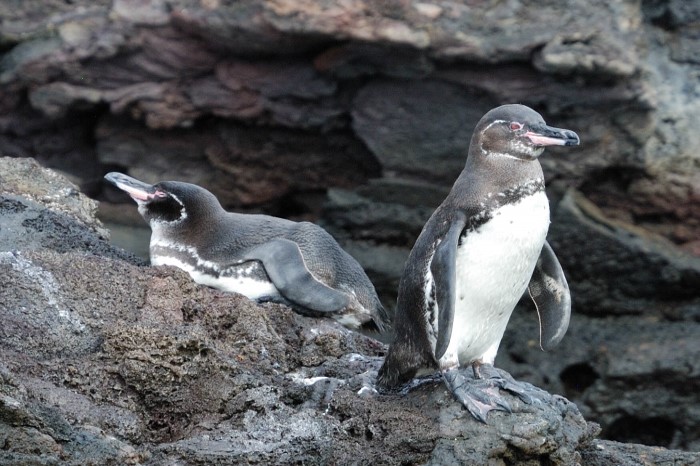Flightless Birds of Galapagos
Found nowhere else on Earth, the Galapagos Islands are home to two species of flightless birds: The flightless cormorant and Galapagos penguin.Discover fascinating facts about our flightless friends and how they have evolved special adaptations to their semi-aquatic life.
Galapagos Penguin
Galapagos penguins are the world’s rarest penguin, with a total population of less than 1,000 breeding pairs. They are the most northerly occurring species of penguin and are found primarily on the western islands of Isabela and Fernandina, where they nest in caves and crevices among the coastal lava. The penguins have adapted physically and behaviorally to their challenging environment, enabling them to survive under the harsh conditions of the equatorial sun. Standing at only 30 centimetres, the Galapagos penguin is one of the smallest penguin species.
Did you know they can reach speeds of up to 35 mph whilst hunting for fish?
The flightless cormorant’s wings no longer function for flight, but it is able to swim and dive for prey better than its cousins who are still able to fly.
Charles DarwinFlightless Cormorant
The only species of cormorant that has lost the ability to fly, the flightless cormorant has successfully adapted to survive on the rocky shores of the Galapagos. It uses its powerful hind legs to propel itself through the water, hunting for its favourite foods of octopus and eels. It is the heaviest of the cormorant species and can live for up to 50 years. Despite not being able to fly, it can still be seen holding its small, stunted wings out to dry in the sun, just as its flying cousins do in other parts of the world.
Did you know the male flightless cormorant brings gifts of seaweed to his partner for nest-making?


